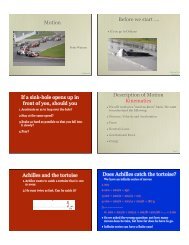Energy Introduction
Energy Introduction
Energy Introduction
Create successful ePaper yourself
Turn your PDF publications into a flip-book with our unique Google optimized e-Paper software.
•If the earth was 9 mm in radius, it would be a<br />
Black hole<br />
•This is the Schwarzchild radius: roughly the black<br />
hole radius<br />
James Watt<br />
Peter Watson<br />
• Beam engine was<br />
first efficient steam<br />
engine<br />
• enabled the<br />
industrial revolution<br />
One more related idea:<br />
Momentum<br />
• Stopping a tennis ball is easy<br />
• Stopping a medicine ball isn’t easy<br />
Wikipedia<br />
<strong>Energy</strong> ≠ Power<br />
(but they are related)<br />
• Power = rate of energy consumption (or rate<br />
of energy production)<br />
• 1 watt = 1 Joule/second<br />
• Light-bulb ~100W<br />
• You (from food) ~ 100 W<br />
• Laptop~50 W<br />
• Car (at 60 km/hr) ~ 40 kW<br />
• From sun: 1.4 kW/m 2<br />
• Total ~300 GW<br />
• Electrical ~60GW<br />
• per capita ~ 10 kW<br />
Canada<br />
Roughly!<br />
• Note (very confusingly) a kilo-watt hour is a<br />
unit of energy not power<br />
• 1 kWh = 3600 x 1000 J = 3.6 MJ<br />
• Momentum<br />
• p = mv<br />
• = mass ×velocity<br />
• To stop an object requires<br />
• force×time<br />
• (can supply a large force for a short time, all<br />
small force for a long time)


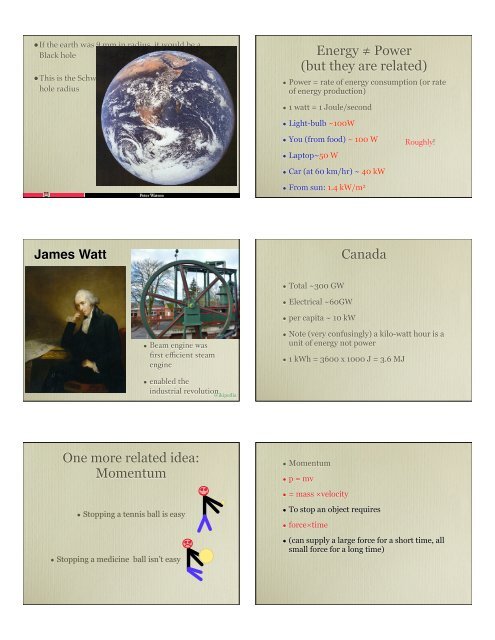


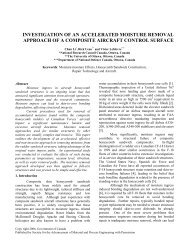
![Assignment 3 [pdf] - Department of Physics - Carleton University](https://img.yumpu.com/19038221/1/190x245/assignment-3-pdf-department-of-physics-carleton-university.jpg?quality=85)
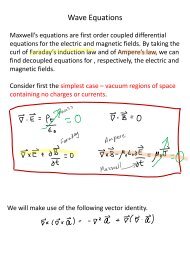
![Assignment 2 [pdf] - Department of Physics - Carleton University](https://img.yumpu.com/19038215/1/190x245/assignment-2-pdf-department-of-physics-carleton-university.jpg?quality=85)

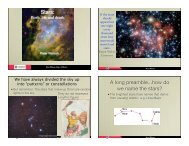
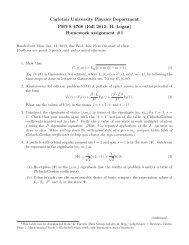
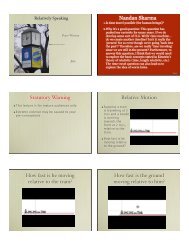
![Assignment 7 [pdf] - Department of Physics - Carleton University](https://img.yumpu.com/19038096/1/190x245/assignment-7-pdf-department-of-physics-carleton-university.jpg?quality=85)
